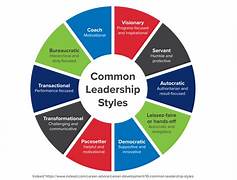The Impact of Leadership Styles on Team Performance
Leadership plays a pivotal role in shaping team dynamics, employee satisfaction, and overall organizational success. The style of leadership adopted by a manager or team leader can significantly influence how a team performs, collaborates, and achieves its goals. In this article, we explore various leadership styles, their impact on team performance, and strategies to harness effective leadership for optimal results.
Understanding Leadership Styles
Leadership styles refer to the methods and approaches leaders use to guide, motivate, and manage their teams. Different styles are suited to various situations, and understanding these styles helps in determining their impact on team performance. Common leadership styles include:
- Autocratic Leadership: This style is characterized by centralized decision-making, where the leader retains all authority. Team members are expected to follow directives without much input.
- Impact on Team Performance: Autocratic leadership can be effective in situations that require quick decision-making or where the team lacks expertise. However, it may lead to low morale and limited creativity as employees feel excluded from the decision-making process.
- Democratic Leadership: Also known as participative leadership, this style involves collaboration and team input in decision-making processes. Leaders encourage open communication and value employees’ opinions.
- Impact on Team Performance: Democratic leadership fosters a sense of ownership, motivation, and creativity within the team. It enhances problem-solving and innovation but may slow down decision-making in time-sensitive scenarios.
- Transformational Leadership: Transformational leaders inspire and motivate their teams by focusing on vision, innovation, and personal development. They lead by example and emphasize the importance of shared goals.
- Impact on Team Performance: This style often results in high levels of engagement, satisfaction, and productivity. Transformational leaders create a culture of trust and enthusiasm, driving teams to exceed expectations.
- Transactional Leadership: This style is based on structured tasks, rewards, and punishments. Leaders use clear expectations and performance monitoring to ensure goals are met.
- Impact on Team Performance: Transactional leadership is effective in achieving short-term objectives and maintaining order. However, it may not foster creativity or long-term employee development.
- Laissez-Faire Leadership: In this hands-off approach, leaders provide minimal guidance and allow team members to make decisions independently.
- Impact on Team Performance: Laissez-faire leadership can empower highly skilled and self-motivated teams but may lead to confusion or lack of direction if team members require more support.
Key Factors Influencing the Effectiveness of Leadership Styles
- Team Composition: The skills, experience, and personalities of team members play a critical role in determining the effectiveness of a leadership style. For instance, experienced teams may thrive under laissez-faire leadership, while less experienced teams may require a more hands-on approach.
- Nature of Tasks: Simple, repetitive tasks might benefit from transactional leadership, whereas complex, innovative projects often require transformational or democratic leadership.
- Organizational Culture: Leadership styles must align with the organization’s culture. A highly hierarchical organization may favor autocratic leadership, while startups might lean towards democratic or transformational styles.
- External Environment: Factors such as market dynamics, competition, and economic conditions can influence which leadership style is most effective. During crises, autocratic leadership may provide stability, while transformational leadership can inspire resilience.
The Positive Impacts of Effective Leadership on Team Performance
- Enhanced Productivity: Effective leaders provide clear direction, set achievable goals, and align team efforts with organizational objectives, boosting productivity.
- Improved Morale and Job Satisfaction: Democratic and transformational leaders foster inclusive and supportive environments, enhancing employee satisfaction and reducing turnover.
- Innovation and Creativity: Leadership styles that encourage collaboration and open communication, such as democratic and transformational, stimulate innovation and problem-solving within teams.
- Stronger Team Cohesion: Effective leaders build trust, resolve conflicts, and encourage collaboration, leading to stronger team unity and better performance.
- Skill Development: Transformational leaders prioritize employee growth, equipping team members with skills that enhance both individual and collective performance.
The Negative Impacts of Ineffective Leadership on Team Performance
- Low Motivation and Engagement: Autocratic or laissez-faire leaders may fail to motivate their teams, leading to disengagement and reduced performance.
- High Turnover Rates: Ineffective leadership often results in dissatisfaction, prompting employees to leave for better opportunities.
- Conflict and Dysfunction: Poor leadership can create misunderstandings, unresolved conflicts, and a toxic work environment, undermining team performance.
- Missed Opportunities: Leadership styles that stifle creativity or fail to recognize team potential may lead to missed opportunities for growth and innovation.
Strategies for Leaders to Enhance Team Performance
- Adopt a Flexible Leadership Approach: Leaders should be adaptable, shifting between styles based on team needs and situational demands.
- Develop Emotional Intelligence: Emotional intelligence enables leaders to understand and manage their own emotions while effectively addressing the needs and concerns of their team.
- Encourage Open Communication: Creating a culture of transparency and feedback fosters trust and collaboration.
- Provide Regular Training and Development: Investing in employee growth not only enhances skills but also demonstrates a leader’s commitment to the team’s success.
- Recognize and Reward Contributions: Acknowledging achievements boosts morale and motivates employees to maintain high performance.
- Set Clear Expectations: Clearly defined roles, responsibilities, and goals provide direction and prevent misunderstandings.
Case Studies in Leadership and Team Performance
- Steve Jobs (Apple Inc.): Jobs’ transformational leadership style inspired teams to innovate, resulting in groundbreaking products like the iPhone and MacBook. His focus on excellence and vision drove Apple’s success.
- Satya Nadella (Microsoft): Nadella’s empathetic and collaborative leadership has revitalized Microsoft’s culture, promoting innovation and growth through teamwork and inclusivity.
- Elon Musk (Tesla, SpaceX): Musk’s autocratic yet visionary leadership has propelled his companies to achieve unprecedented milestones. However, his demanding style has also sparked debates about its impact on employee well-being.
Conclusion
Leadership styles significantly influence team performance, shaping how teams collaborate, innovate, and achieve goals. While no single style fits all situations, effective leaders are those who adapt their approach to meet the needs of their team and organizational objectives. By fostering communication, trust, and growth, leaders can unlock their team’s full potential, driving sustainable success. Organizations must prioritize leadership development to ensure that their teams thrive in an ever-evolving business landscape.


